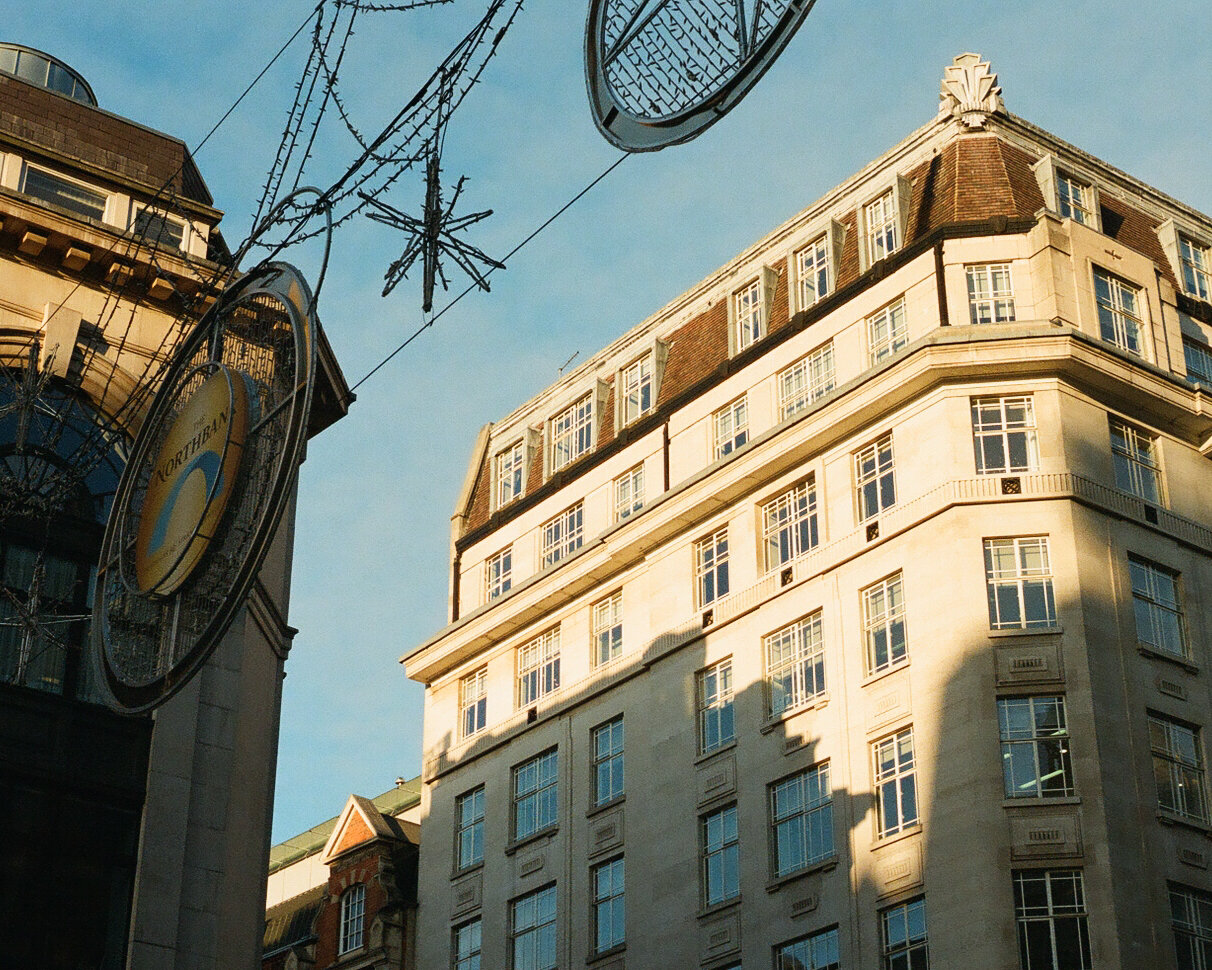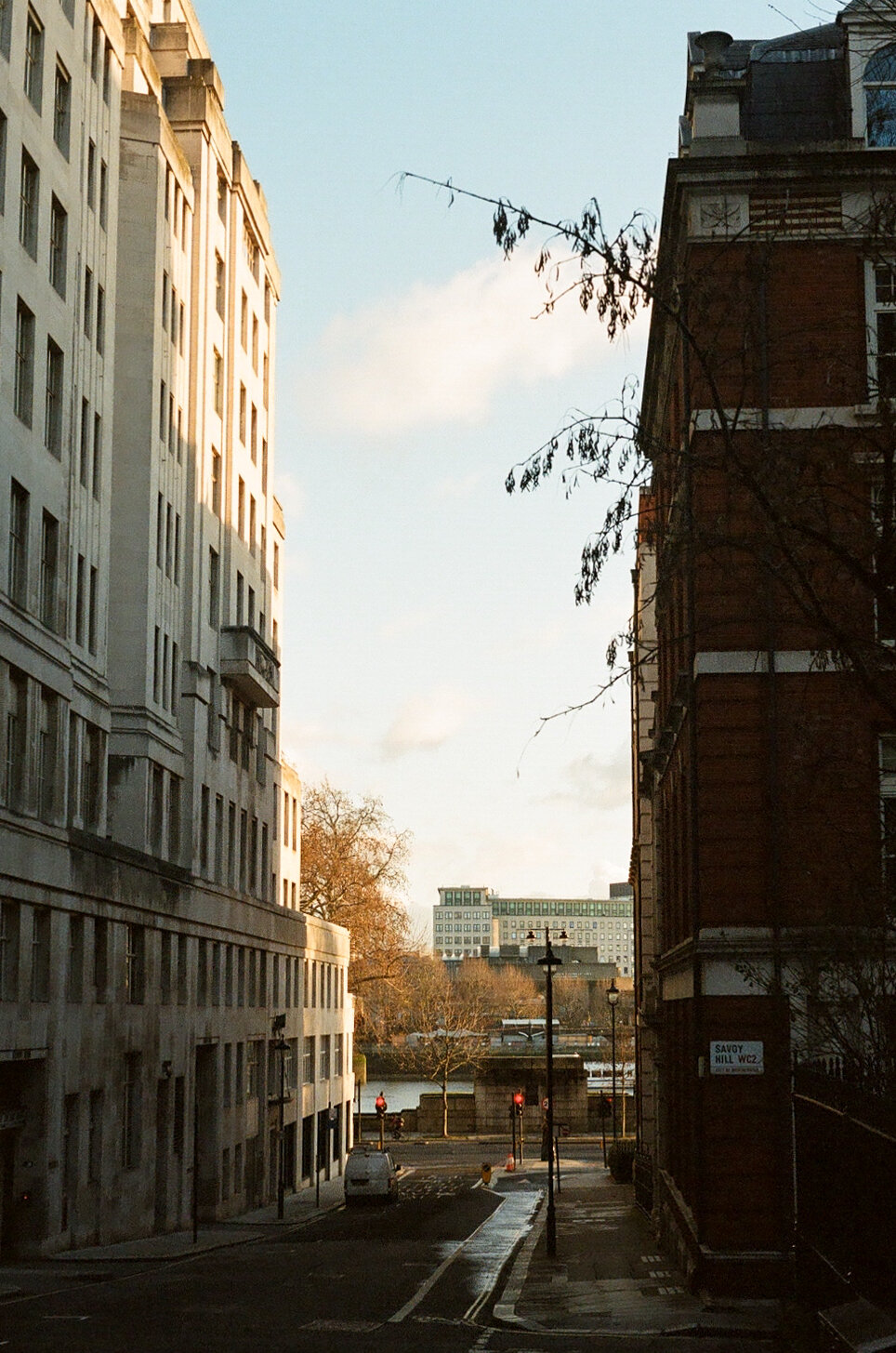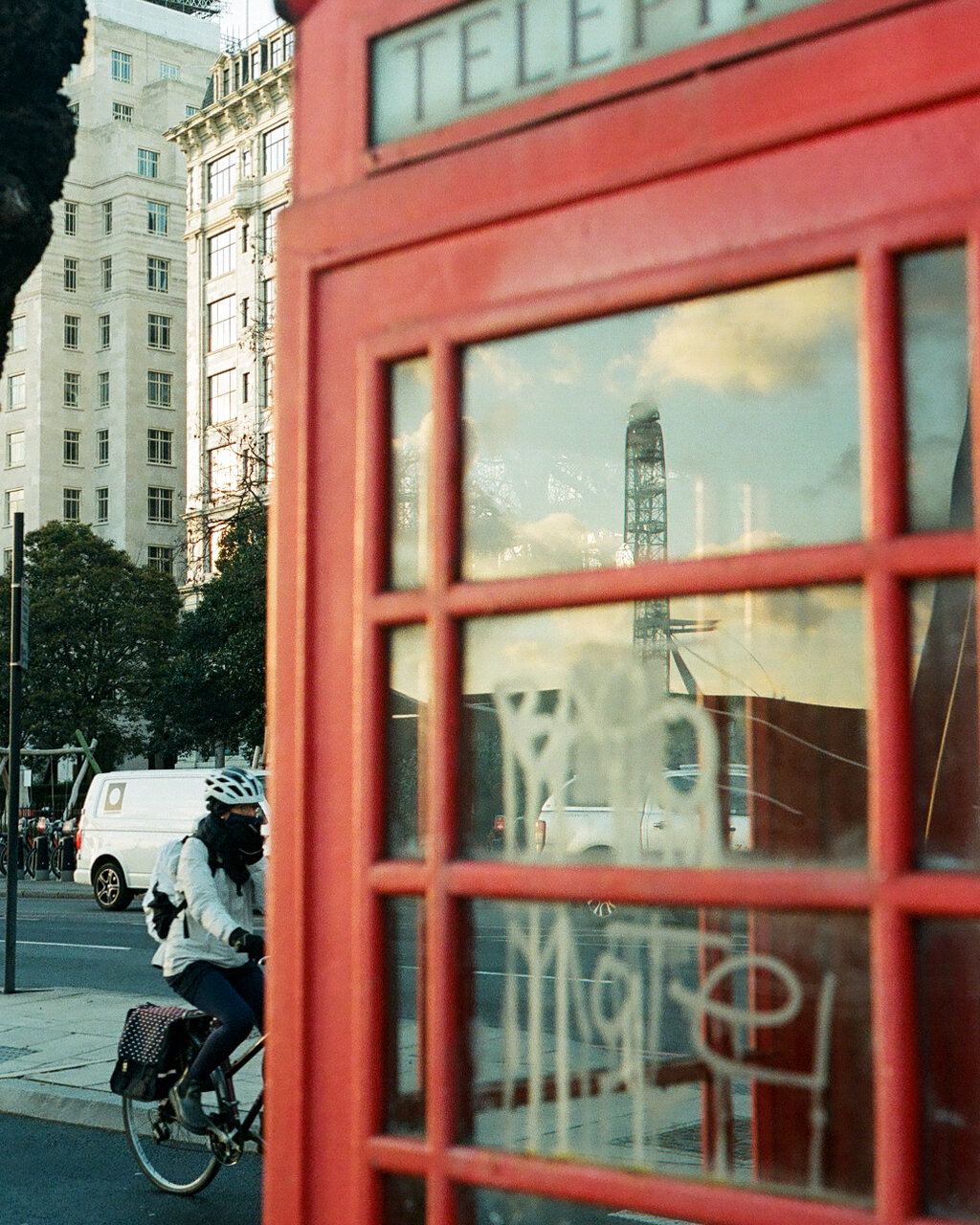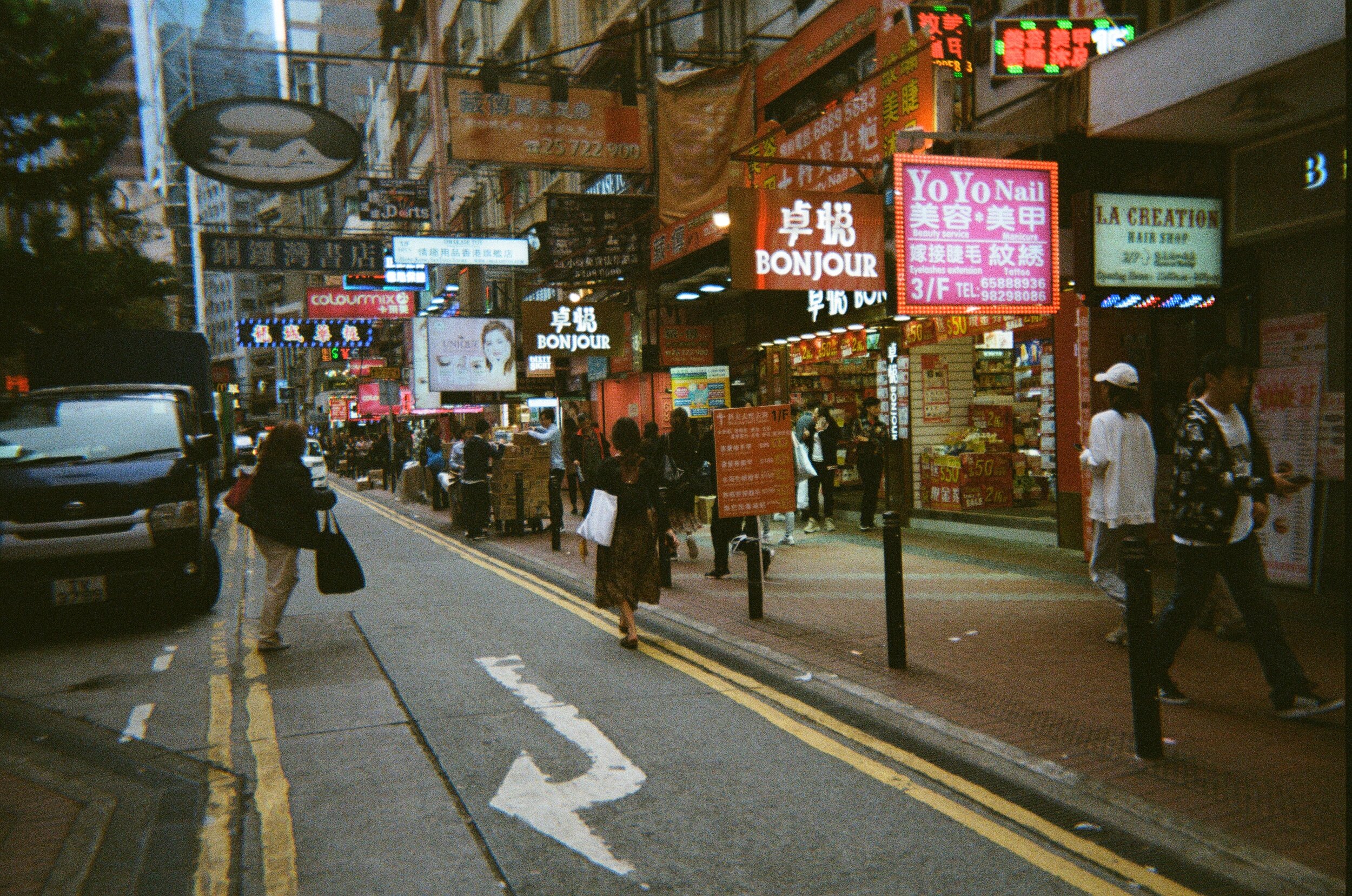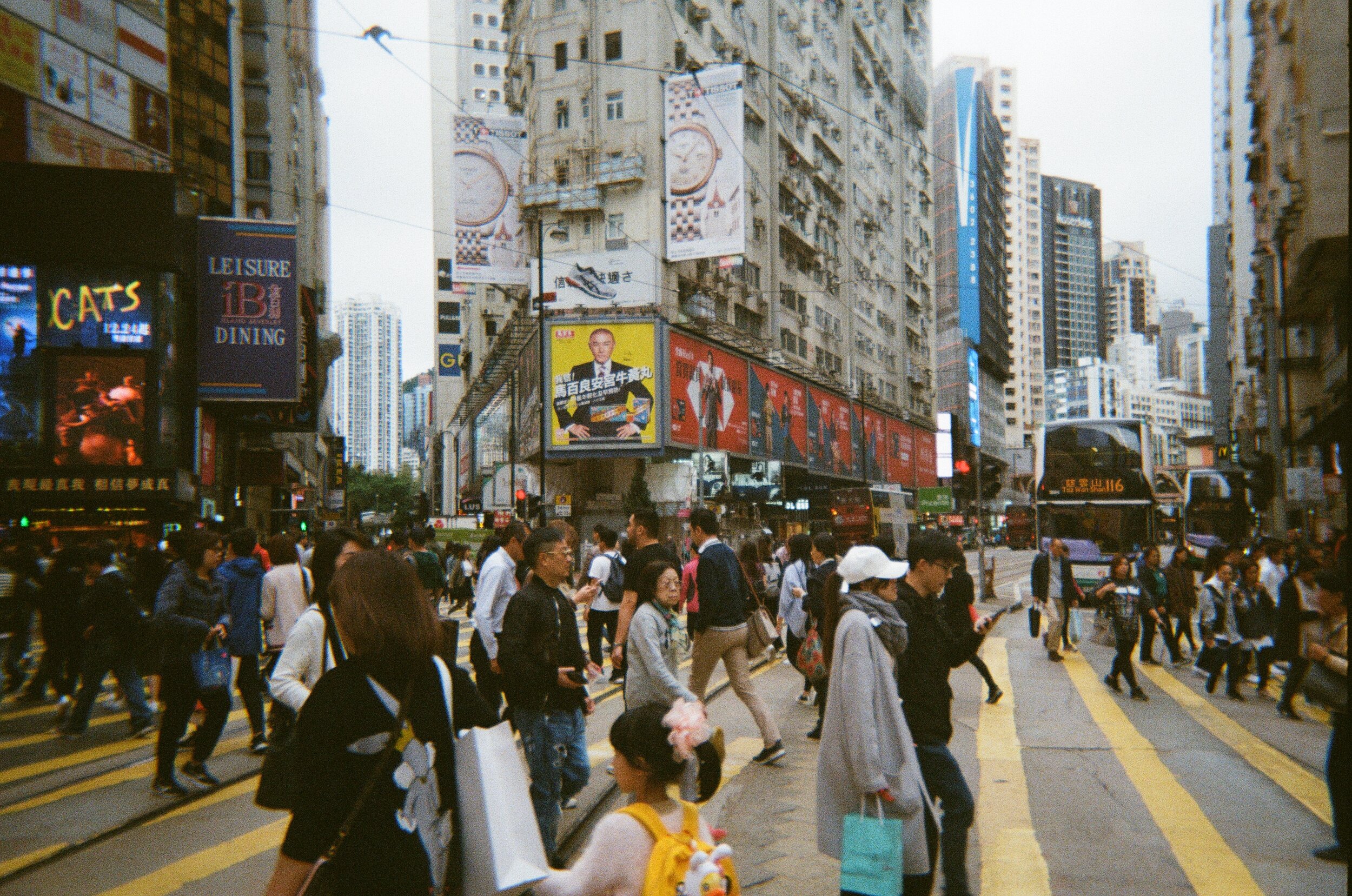Film photography has been a subject of heated debate - is it worth it to shoot film in an era in which digital photography is so convenient and cost-effective? This article breaks it down to you and addresses the question of whether film photography is worth it in today’s age, speaking from the point of view of costs, image quality, and how film stocks functions. Enjoy!
If you find this helpful, SUBSCRIBE to my channel via the box on the left to make the most out of my blog! Also, do share it with people who might be interested. Shoot me an email/ DM to share your thoughts too.
Also, Pin this article to your Film Photography/ Photography Inspiration boards in Pinterest if you find it helpful!
Does anyone still use film cameras? Are film cameras obsolete?
People do still use film cameras and there is a tight-knit film photography enthusiasts actively shooting film today. Not many cameras models are still in production, but film cameras are being traded in second-hand markets in large volumes. Many film cameras are being listed on online market places like ebay, also refurbished and sold in film camera shops. In fact, film camera demand is on the rise in recent years, as more people are venturing into analogue photography in this digital age.
The number of camera repair shops has also been increasing, because most film cameras are very old now. It is totally normal that parts can wear out and malfunction. More and more people have dedicated themselves to keeping film alive, including learning how to fix film cameras, create video tutorials on how to use them, and buying classic models off second-hand marketplaces.
For example, here is a tutorial I have done in late 2020 about how to operate a TLR medium format film camera that I inherited from my grandma.
What should I look for when buying a film camera?
Three most important things to check is whether the shutter curtain is working, if the lens is clear of mould and scratches, if the camera closes up properly, and whether the electronic display turns on if the camera is powered by batteries. This is not an exhaustive list, but these are the most common parts where older film cameras can have issues.
The shutter curtain is the part inside the camera which gets lifted up when you press the shutter, so that light can be let in and reach the film. At some point, be it digital or analogue cameras, the shutter blinds can get stuck after the camera has reached a certain shutter count. The shutter curtain is an incredibly delicate part of the camera, and is highly prone to malfunctioning with extensive usage. This is an important element to check because if the blinds don’t transition properly, no picture can be taken on that camera, which will end up wasting your film.
Another important thing to look for when buying a film camera is whether the lens is clouted with mould. If the mould is found on the outside of the lens, it can be cleared using alcohol or other chemicals specially designed for killing mould in camera parts. The case gets more complicated if the mould is inside the lens, because the lens is constructed and kept intact with tiny nails and contain many layers. It requires expertise from camera repairmen to dissemble the lens and then clean the mould, which would be very costly. Even then, it may not be immediately apparent as to how deep the fungus has penetrated into other parts of the camera, which can lead to more problems down the road. Therefore, it is not recommended to pick up a camera with mould inside and then try to have it cleared. Unless, of course, you intend to create the ‘mould’ look in your photos, which either fogs up the glass, or forms tiny lines across the frame..
The camera should ideally close up properly without external assistance. To assess this, check whether the back cover locks into place properly. Another place to look is the cushions placed around the tiny window which is designed to show you what film is inside the camera. Depending on the extent to which the camera’s inability to close up fully, the entrance of light can vary from creating slight light leaks to full-blown exposures. While in fortunate cases, light leaks can be a desirable effect, you certainly do not want to run the risk of getting blank shots by using a camera that doesn’t close up properly to protect the light-sensitive film inside. If you only found out about light leakage after your purchase, you can mitigate it by sealing your camera with black duck tape to prevent light from coming into contact with the film.
Not all cameras are powered by electricity, for instance, my fully manual twin lens reflex (TLR) I talked about in my video above. However, newer models of film cameras, which also happen to be more beginner-friendly, typically require batteries and have an electronic screen displaying camera settings and various shooting modes. Where that’s the case, the display is a central part of the shooting experience and the main portal through which you will operate the camera. With time, some parts of the display board might stop working, resulting in incomplete displays or random flashing.
Does it matter what brand of film you put in your camera?
Some photographers stick to one type of film to ensure consistency across their professional work as a business practice. Each brand of film renders colours differently and varies in dynamic range, which ultimately creates their characteristic looks in images. But otherwise, for the purposes of learning and experimenting, there is no reason why you must limit yourself as to the type of film you put in your camera. As long as you are using film of the right format, it will fit perfectly into your camera regardless of the brand.
Here I have some examples of the personal preferences that famous photographers are believed to have. For instance, Henri Cartier-Bresson was said to have stuck with the black and white film Kodak Tri-X, and later moved on to Ilford Hp5+ since its debut; Vivian Maier was believed to have shot also with the Kodak Tri-X, though the 120 roll film across the majority of her career, and later made the switch to 35mm colour photography using the Kodak Ektachrome.
The choice of film is a matter of 1) personal preference and 2) the subject of the shoot. I have created a guide on ‘[Pho.Talk] How to Choose your 35mm Film (ISO + Brand)’, which tells you what to consider depending on your situation. You might find yourselves going for different stocks for different projects.
After quite a bit of research though, it becomes apparent that as technology develops and as new film stocks are produced, most notably colour film stock which completely revolutionised the black and white game, most photographers had gone through the process of trying out different types of film. Some find one favourite film stock and decide to stick to it for pretty much the rest of their lives, but an even larger proportion of photographers hung out with a handful of films at the same time, for the simple reason that it is not the point. Because of the wide selection available, there will mostly likely be a few that fits a photographer’s aesthetics.
There is seldom the need to further narrow the selects down to one absolute favourite, and because of the different intentions in the designing of each film stock, you will see that each film stock has its own time and place.
Can you use 120 film in a 35mm camera?
No, because 120 film does not fit into 35mm cameras. 120 film refers to middle format film typically 6cm tall, therefore is not meant to go inside a 35mm film camera. In general, middle format cameras are larger in size to hold the larger film format, whereas 35mm cameras are usually more compact because it only needs to hold a roll of film that is 35mm tall.
What is the difference between film speeds? (eg. 200, 400, 800 etc)
Film speed is the analogue equivalent of ISO in the digital realm. It is a rating of the light sensitivity of the film. The higher the number, the more sensitive the film is, and thus the more it can be used to shoot under dim light conditions. Film speeds are typically one stop of light apart from each other. For example, film speed of 800 is one stop more light than film speed 400, and film speed 200 is another stop less. Typically, film stocks with a higher speed shows a rougher grain structure in the final image, and are more subject to decay with time relative to films of a lower speed.
Just like how ISO works on digital cameras today, film speeds represent how sensitive a film is to light. The only difference is that when shooting film, the ISO is determined by the choice of film and is therefore constant throughout the entire roll of film. In order to change the film speed, you will need to change the film stock in your camera.
Lower film speeds, widely understood as those with film speeds of and below 200, are mostly used for sunny, outdoor situations, assuming that no artificial lighting is concerned. It is also for those who love fine-looking grain, which is only achievable on films with a slower speed. However, the necessary drawback with shooting on slow films is the limitation on the range of situations in which it can be used, and that slower shutter speeds are needed to let in enough light.
Mid-range film speeds, typically understood to be 400, is a rather versatile film speed that is usable across a decent range of lighting situations. It certainly does well under bright sun, but can also cope with overcast days. It is, however, not recommended to shoot during the night with a film rated ASA 400, supposing that no pushing is intended in the development process.
As for higher film speeds, which generally refer to anything at and above 800, they can generally be used for most lighting situations, including dimly lit spaces indoors. You would generally expect more noticeable grain on such film speeds, analogous to getting more noise when raising the ISO of digital sensors.
Is film photography expensive considering cameras, film rolls and the scanning? Is film more expensive than digital?
It is not necessarily expensive if you are opting for films and scans on the cheaper end, but it will add up when moving towards higher-end production and equipment. For starters, most likely opting for 35mm film, every roll costs $20 to buy and process, and cameras cost about $45. The digital equivalent is full-frame cameras, which starts at $1500, with accessories like SD cards adding up to around $30. Based on these ball-park figures, the cost of shooting film will exceed that of shooting digital after taking roughly 2500 frames, equivalent to 70 film rolls. Assuming one roll is shot per week, costs of shooting film exceeds that of digital from 1.5 years onwards.
There are apparently a lot of assumptions made in the above estimation, so let’s dive into those in greater detail to give you a better picture. Here are a list of assumptions made to simply the calculation while remaining realistic.
Only 35mm film format is looked at (as opposed to medium and large format because those are less likely a fit for beginners);
You are sending the development and scanning to a photo lab (as opposed to doing these in-house because it requires skill and extra investment in chemicals and equipment);
You would otherwise opt for full-frame digital cameras (as opposed to smaller sensors or else the comparison doesn’t make sense because 35mm format is equivalent to a full-frame sensor size);
You will own 2 SD cards (as opposed to just one because that is too risky and inconvenience for any photographer);
You are a reasonably dedicated amateur shooter who shoots once per week, finishing an entire roll
Here are the key price points that we are using for the calculation:
Lower-end film stock averages at $10 (this factors in both colour and black & white films, at various film speeds);
Basic film development and scanning services averages at $10 (this usually provides files at a standard, usable resolution within a week);
Entry-level film cameras averages at $45 (this covers point-and-shoot cameras and used SLRs including lenses);
Cheaper full-frame cameras averages at $1500 (including a lens and accessories);
SD cards average at $15
Here goes the calculation:
The total starting cost of shooting digital = $1500 + $15x2 = $1530;
The total starting cost of shooting film = $45;
Average cost of shooting a roll of film = $10 for film stock + $10 for lab processing = $20
The number of frames shot on film before cost catches up with digital setup = ($1530 - $45)/ $20 = 74 rolls;
The period of time it takes an amateur to complete 74 rolls = 74/52 weeks = 1.4 years.
For simplicity, let’s roll up the figure to 1.5 years - shooting film becomes more expensive than digital after shooting for 1.5 years. This gives you a rough idea of what you are getting yourself into as a entry-level film photographer, and please do tweak the assumptions based on your situation.
What advantages does 35mm film have over high-end digital cameras?
Overall on the balance of things, not much, but here are some pros of shooting 35mm film over full-frame DSLRs. The grain structure of the resulting images shot on 35mm film looks more flattering than digital noise as perceived by most people. The colours rendered by the chemistry of the film stock enables the photographer to achieve the desired look in camera without much post-processing, which is rather hard to reproduce in the digital editing process. Film also has more lenience in relation to dynamic range, enabling more detail to be captured, whereas digital images are more vulnerable to clipping.
On the other hand, digital camera typically generates sharper images because modern lenses are designed to deliver near-perfect sharpness while older lenses tend to generate softer images. Also, the scanning process, or any means of digitising a negative, can potentially create compromises in the resolution of the resulting file. Digital also allows for a more flexible means of post-production accessible to more people, for the reason that raw files are designed to be highly mouldable files especially in terms of colour, which is pretty much determined by the emulsion in film; also, it can take place in a wide variety of computer softwares as opposed to highly specialised darkrooms.
Some preliminary factors that could point you to either 35mm film or digital include the following:
If you have a tight deadline for your work - the development can scanning does take time, from half a day if you do it yourself, to up to a week if you bring it to a lab. You can pay extra for express service, but still it is hardly comparable to the speed enabled by the digital image process. If anything goes wrong, you can have immediate feedback and recreate the work relatively quicker on a digital system.
If you have a personal style interwoven into the look of a particular film stock - some photographers stick to the same film stock for the majority of their careers, because they have developed a refined style of shooting as a result of knowing a particular film stock very well. Because they have a need to ensure a consistency in style across their bodies of work, sticking to the same film stock is an effective way of achieving this end. It eliminates the challenge of manually recreating that same look, which firstly is a very complicated task, and secondly not a sustainable workflow in terms of time effectiveness.
If you are shooting genres which involve actions - for instance like street, sports or automotive photography, it would be best if you could take a number of images within a span of a few seconds when the desired action takes place. These genres of photography are rather spontaneous, in that the photographer has only an extremely slim amount of time to work with, and speed is vital. With digital, photographers are more able to shoot continuous frames without worrying about wasting film, and digital cameras typically operate faster than film cameras.
There is no simple way of deciding objectively whether 35mm is better than high-end digital, most typically full-frame DSLRs, because the conclusion would vary based on the type of photographer you are and what you do with your photos. The reasons why a photographer ops for one over the other can be surprisingly personal, and only you can decide for your situation what works best for you.
Are film photos better than digital photos in terms of image quality?
Film photos have the technical ability to achieve better quality than digital photos, though mostly limited to larger formats and higher-end film shooters. 35mm film presents to clear edge because the sensor size is the same, and camera lenses typically deliver softer images as compared to digital lenses. The basic scanning process in labs can lead to limits to the final image quality. Larger film formats, compared to full-frame digial, are able to provide better resolution and detail, and users of these larger formats usually have the resources and access to better film processing facilities, fully capitalising on film’s ability to render high quality images.
Do note that digital cameras with larger formats are also available on the market today, but because of the high cost of manufacturing large digital sensors, these cameras typically come in insane prices. Photographers wanting to shoot on larger formats usually do so on film. Therefore, digital photography refers to full-frame digital cameras in this comparison, as a representation of the highest viable potential that the vast majority can expect to achieve in the digital image system.
Here is a gallery of images I took on a SLR film camera. Standard resolution is ordered for the development, at 72 ppi. You can have a feel of the type of image quality you can expect from a mid-level 35mm film scan.
The behind the scenes of how I took these images is put together in this video below, for your reference regarding the practical set of circumstances in which these images were made.
There are three main comparison points between film and digital photography, which are substantial factors to consider in relation to the resulting image quality. Firstly, the choice of lens; secondly, sensor size and lastly, post-production (scanning for film and editing for digital). Let us look at them one by one below.
Lens Choice
In relation to lenses, film cameras are typically paired with vintage lenses, which render softer images. As more research goes into developing the lenses we have today on digital cameras, manufacturers are able to build lenses that are insanely sharp, in extreme cases even sharper what the human eye can see. On some lower-end film cameras, like disposable cameras, the softness in the resulting image is immediately apparent even without enlarging. Therefore due to the advance in technology in lens design today, it is not always the case that film photos come out with better quality as compared to digital.
For your comparison, here are images taken on a plastic disposable camera, also developed with standard resolution of 72 ppi.
Sensor Size
As per the sensor size, the larger the sensor, the higher the resolution of the final image. For the vast majority of people, the economically sensible way to get access to larger formats is via film, and therefore in this regard, film photography with larger formats does outdo digital in terms of image quality. While the lens build on these cameras might not stack up well against the modern digital lens, the effects of the sensor size far outweighs that of the lens resolution. Larger formats easily double (or even more) the area of a 35mm sensor. For instance, the 6x6 square format (56mm x 56mm) gives a surface area of 31cm sq, compared to the 24mm x 36mm full frame area, which sums up to only 8.6cm sq. The difference is even greater for larger film formats like 4x5 (102mm x 127mm) would have an area of 130cm sq. These are incredible differences in resolving power of the camera, giving the larger formats this exceptional ability to capture detail.
Post-processing
The last variable in the equation is the potential loss of image quality in the handling of the files. On the whole, digital files would suffer less compromise in its handling. In fact, almost none if you shoot in raw. Editing softwares are mostly able to read the digital information as is, only introducing reasonable compression at the point of export. The film processing system, however, delivers widely varying results depending on the quality of the scans. The most commonly adopted method of storing film photos is to digitalise the negatives into jpgs, using a scanner or a camera paired with a macro lens. The resulting image quality would then depend on the quality of the scanner or camera. For most people, the more affordable options generate decent scans, which quite apparently falls short of what you would get from a digital raw file. It is possible to pay extra for higher quality scans, though this is not what the wider photographer community is in the position to do.
Is it worth getting a film camera?
Worth is largely a personal value judgment, a large part of it having to do with sentimental reasons. Here is an overview of the changes shooting film can make to your photography, from a perspective learning about the history of photography, understanding technical aspects of the photographic process in general, and the possible linkage to larger formats.
Summary
In this article, we talked about:
Whether film cameras are obsolete;
What to look for when buying a film camera;
If the brand of film stock matters;
The difference between 120 and 35mm film formats;
The difference between various film speeds;
Whether film photos give better image quality;
Whether film photography is more expensive than digital;
How to decide if film photography is worth it for your case.
More sharing coming soon!
SUBSCRIBE via the box on the left for more PRO tips, and follow me on Instagram (@_bjiao__) and let me know what you think in the comments!
Share this article on Pinterest too!
Keep shooting, keep creating!
The mission of this blog is to provide the best insider information in the photography industry, as openly as possible. You have direct access to my
first-person experience as an aspiring photographer who talks, but also works.
Honest opinion are rarely available as public resources because this is a competitive industry. Huge sums are made when such information is delivered in the form of mentorship and workshops.
This blog is a great way in which I cover my daily expenses, but also provide real value.
If you have learnt something that would be worth at least $10, please consider donating to the page. This enables me to keep creating content and helping more people sustainably.
Your continued support for the blog is appreciated!

